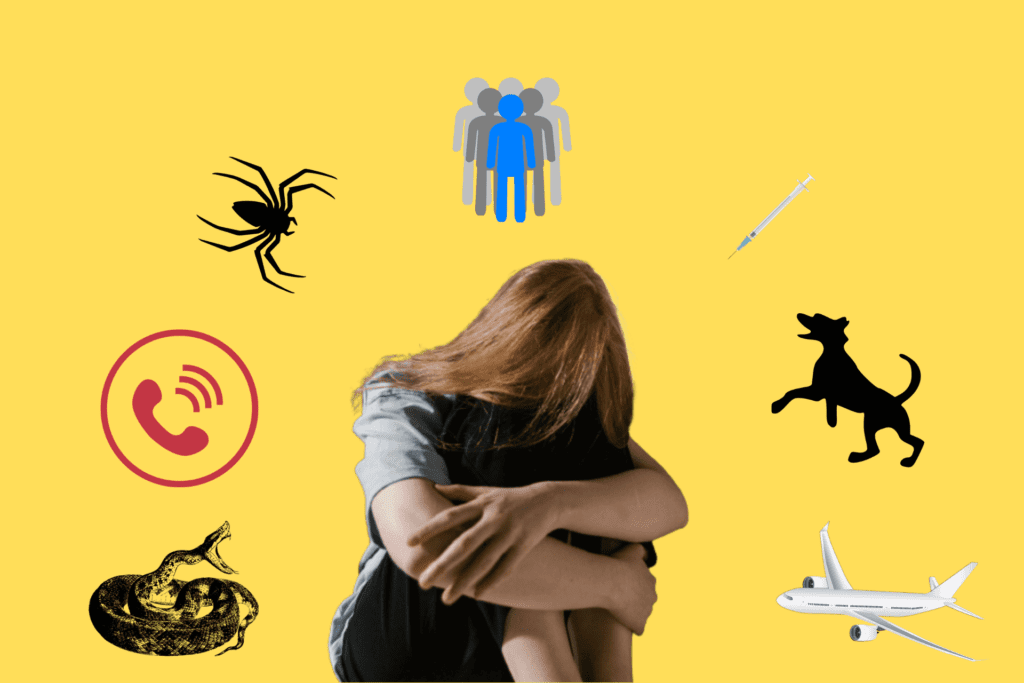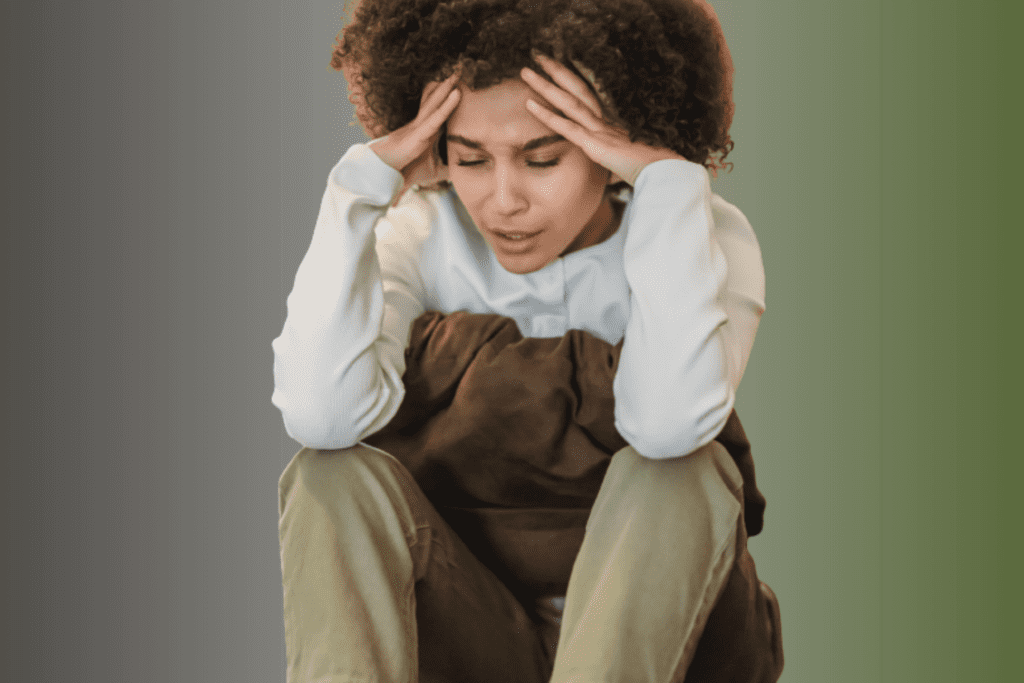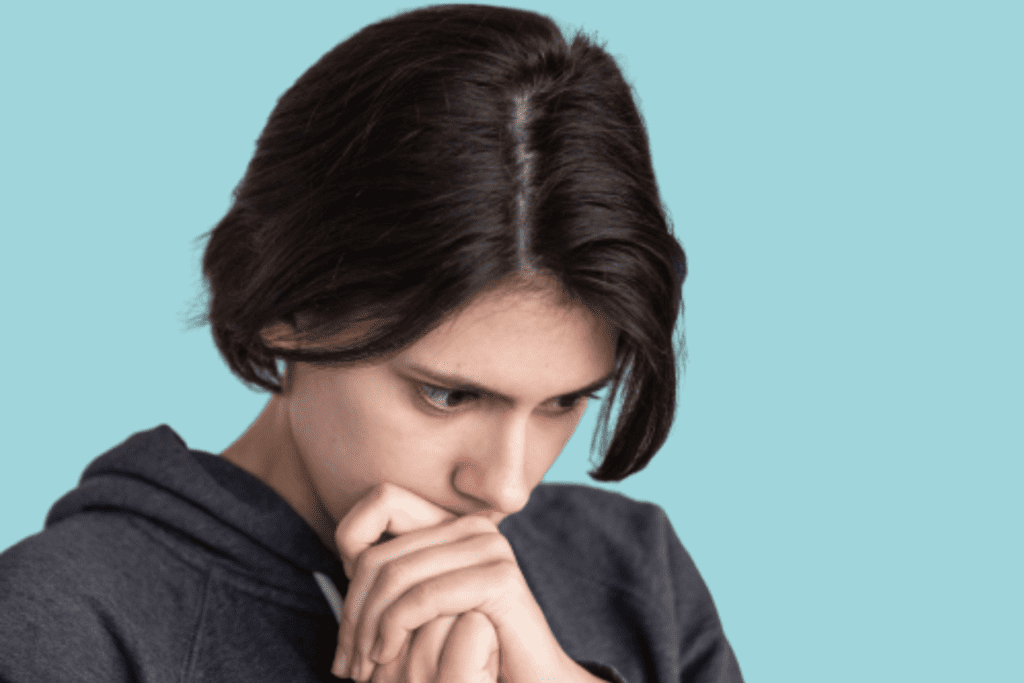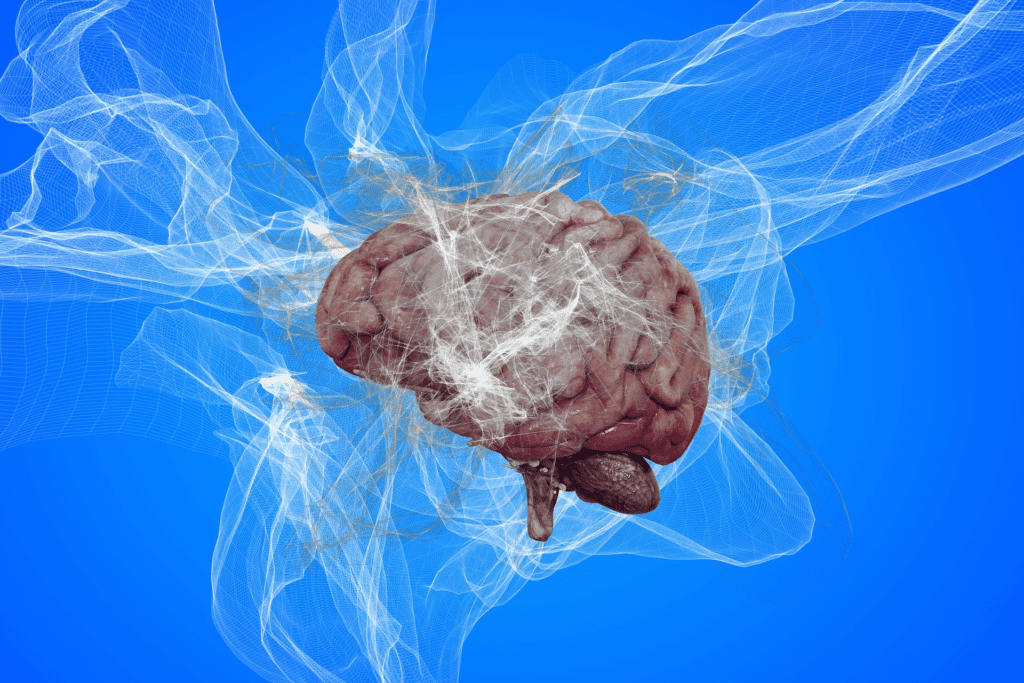What is It?
A phobia is an extreme and irrational fear or aversion towards a specific object, situation, or activity. It is a type of anxiety disorder characterized by persistent and excessive dread that is disproportionate to the actual threat posed. Phobias can be triggered by a wide range of stimuli, including animals, heights, social situations, flying, or certain medical procedures. Individuals with phobias often experience intense anxiety, panic attacks, and a compelling need to avoid the feared stimulus. Phobias can significantly impact a person’s daily life, limiting their activities and causing distress.
Table of Contents
ToggleDefinition
Phobia: An excessive and irrational fear or aversion towards a specific object, situation, or activity.
Classification and Types of Phobia

Phobias, as irrational fears, can be classified into different categories based on the specific objects, situations, or activities that trigger them. This classification provides valuable insight into the nature and scope of these anxiety disorders, helping us comprehend the diverse range of phobias individuals may experience. Let’s explore the classification of phobias:
1. Specific Phobias
Specific phobias involve a persistent and excessive fear of a particular object or situation. Some common specific phobias include:
Arachnophobia:
This is the fear of spiders. This specific phobia is widely recognized as one of the most prevalent. People with arachnophobia may experience intense fear, panic, or distress when they encounter spiders or even think about them.
Acrophobia:
The fear of heights, commonly known as acrophobia, is characterized by an aversion to elevated places. Individuals with acrophobia may feel extreme anxiety, vertigo, or a sense of impending danger when they are at high places or exposed to situations involving heights.
Ophidiophobia:
It is the fear of snakes. People with ophidiophobia may have an intense fear or aversion to snakes, which can lead to avoidance behaviors, heightened anxiety, and panic attacks.
Related: Panic Attacks vs. Anxiety Attacks
Claustrophobia:
This phobia involves the fear of enclosed spaces. Individuals with claustrophobia may experience extreme distress, difficulty breathing, or panic when they are in confined spaces such as elevators, small rooms, or crowded places.
Aerophobia:
It refers to the fear of flying. People with aerophobia may experience severe anxiety, panic attacks, or physical discomfort when they have to travel by plane or even think about flying.
Trypophobia:
It is the fear of clustered holes or patterns. People with trypophobia may experience strong feelings of disgust, anxiety, or even physical reactions like itching or trembling when they see objects or images with small, clustered holes or patterns.
Mysophobia:
This refers to the fear of germs or dirt. Individuals with mysophobia may have an excessive fear of germs, leading to avoidance of situations or objects perceived as dirty, frequent handwashing, or compulsive cleaning behaviors.
Hemophobia:
It is the fear of blood. People with hemophobia may experience extreme anxiety, fainting, or panic attacks when they see blood or are in situations that involve blood, such as medical procedures or accidents.
Cynophobia:
This phobia involves the fear of dogs. Individuals with cynophobia may experience intense fear, panic, or anxiety when they encounter dogs, regardless of their size, breed, or temperament.
Astraphobia:
It is the fear of thunder and lightning. People with astraphobia may feel extreme anxiety, fear, or panic during thunderstorms, often seeking shelter or engaging in avoidance behaviors during such weather conditions.
Dentophobia:
This refers to the fear of dentists or dental procedures. Individuals with dentophobia may experience heightened anxiety, fear, or avoidance when it comes to dental visits, often leading to poor dental health or delayed treatments.
Nyctophobia:
It is the fear of darkness or night. People with nyctophobia may feel intense fear, anxiety, or discomfort when in dark environments or during nighttime, often seeking light or avoiding situations where they are exposed to darkness.
Entomophobia:
This phobia involves the fear of insects. Individuals with entomophobia may experience extreme fear, disgust, or anxiety when they encounter insects, leading to avoidance behaviors or heightened reactions.
Aichmophobia:
It is the fear of needles or pointed objects. People with aichmophobia may feel intense fear, anxiety, or panic when exposed to needles, injections, or objects with sharp points, often avoiding medical procedures or situations involving needles.
Glossophobia:
This refers to the fear of public speaking. Individuals with glossophobia may experience extreme anxiety, fear, or panic when speaking in front of an audience, often leading to the avoidance of public speaking engagements.
Thanatophobia:
It is the fear of death or dying. People with thanatophobia may experience intense anxiety, fear, or distress when thinking about death, dying, or their mortality, often leading to existential concerns or avoidance of topics related to death.
Emetophobia:
This phobia involves the fear of vomiting or seeing others vomit. Individuals with emetophobia may experience extreme fear, anxiety, or disgust related to vomiting, leading to avoidance of situations or triggers associated with vomitings, such as certain foods or illnesses.
Trypanophobia:
It is the fear of injections or needles. People with trypanophobia may feel intense fear, anxiety, or panic when faced with the need for injections or medical procedures involving needles, often leading to avoidance of medical care or high levels of distress during such procedures.
Coulrophobia:
This phobia involves the fear of clowns. Individuals with coulrophobia may experience extreme fear, anxiety, or discomfort when in the presence of clowns or even when exposed to images or depictions of clowns.
2. Social Phobias
Social phobias, also known as social anxiety disorder, involve an intense fear of social situations and being negatively judged or humiliated by others. Here is a list of social phobias, which are characterized by intense fear or anxiety related to social situations. Examples include:
Social Anxiety Disorder (SAD):
This is a pervasive fear of social situations, particularly those involving unfamiliar people or potential scrutiny. It can manifest as fear of public speaking, meeting new people, or participating in social gatherings.
Performance Anxiety:
This refers to the fear of performing or being observed during specific tasks or activities, such as giving a presentation, playing a musical instrument, or participating in sports.
Public Speaking Phobia:
This is a specific fear of speaking in front of an audience. It can range from mild discomfort to extreme anxiety and avoidance of public speaking opportunities.
Anthropophobia:
It is the fear of people or human interaction in general. Individuals with anthropophobia may experience anxiety, fear, or discomfort in social situations, leading to avoidance of social interactions and isolation.
Erythrophobia:
This is the fear of blushing or the fear of others seeing one’s blushing. Individuals with erythrophobia may experience intense anxiety, self-consciousness, or avoidance behaviors in situations where blushing is perceived as embarrassing.
Telephonophobia:
It is the fear of making or receiving phone calls. People with telephonophobia may experience anxiety, fear, or panic when they have to use the telephone, leading to avoidance of phone conversations or reliance on alternative communication methods.
Glossophobia:
This is the fear of public speaking, as mentioned earlier. Individuals with glossophobia may experience extreme anxiety, fear, or panic when speaking in front of an audience, often leading to the avoidance of public speaking engagements.
Paruresis:
Also known as “shy bladder syndrome,” paruresis is the fear of using public restrooms or urinating in the presence of others. Individuals with paruresis may find it difficult or impossible to urinate in public settings, leading to discomfort and avoidance of certain situations.
Parcopresis:
It is the fear of defecating in public restrooms or the presence of others. People with parcopresis may experience anxiety or fear that prevents them from using public restrooms for bowel movements, leading to significant distress and avoidance behaviors.
Eating Phobias:
These involve fears and anxieties related to eating in social situations, such as fear of choking, fear of eating in front of others, or fear of being judged for food choices. Examples include phagophobia (fear of swallowing) or sitophobia (fear of eating or food).
3. Agoraphobia
Agoraphobia is typically characterized by fear or avoidance of situations or places where escape might be difficult or help might not be readily available. While agoraphobia itself is not typically categorized into different types, there are some common patterns or subtypes that individuals may experience. Here are some recognized patterns or subtypes of agoraphobia:
Fear of Open Spaces:
Some individuals with agoraphobia may have a specific fear of open spaces or being in large, wide-open areas. They may feel overwhelmed, exposed, or vulnerable in such environments.
Fear of Crowded Places:
Others may have a fear of crowded places, where they may feel trapped, claustrophobic, or anxious due to the presence of many people. Examples include shopping malls, public transportation, and crowded events.
Fear of Leaving Home:
Some individuals may develop a fear of leaving their homes altogether, known as “housebound” agoraphobia. They may feel safest and most secure within the familiar confines of their home and experience extreme anxiety or panic when attempting to venture outside.
Fear of Specific Situations:
Agoraphobia can also involve specific fears related to certain situations or activities. For example, someone may have a fear of driving or being a passenger in a car, using elevators, crossing bridges, or being in enclosed spaces such as tunnels.
Public Transportation:
Some individuals with agoraphobia may fear using public transportation, including buses, trains, or airplanes. The fear of being unable to escape or the anticipation of having a panic attack in these enclosed spaces can contribute to the avoidance.
Being Outside the Home Alone:
People with agoraphobia may feel anxious or unsafe when outside the home without a trusted companion. They may rely on the presence of someone they trust to provide a sense of security.
Specific Locations:
Agoraphobia can be triggered by specific locations associated with previous panic attacks or distressing experiences. Examples may include particular stores, bridges, tunnels, or areas where the individual has had a panic attack before.
Fear of Medical Settings:
Some individuals with agoraphobia may fear medical or healthcare settings, such as hospitals, clinics, or dental offices. They may avoid medical appointments, procedures, or even visiting loved ones in hospitals due to the fear of panic attacks or distress.
Phobia Symptoms

Phobia symptoms can vary depending on the specific phobia and the individual’s response to it. However, some common symptoms may be experienced by individuals with phobias. Here are several possible symptoms:
Intense Fear or Anxiety
Phobias are characterized by an overwhelming, irrational fear or anxiety when exposed to the feared object, situation, or trigger.
Panic Attacks
Some individuals with phobias may experience panic attacks, which are sudden and intense episodes of fear or discomfort. Panic attacks can include symptoms such as rapid heartbeat, shortness of breath, chest pain, trembling, sweating, dizziness, or a sense of impending doom.
Avoidance Behaviors
Individuals with phobias often engage in avoidance behaviors to escape or minimize contact with the feared object, situation, or trigger. They may go to great lengths to avoid encounters, which can significantly impact their daily lives and functioning.
Physical Reactions
Phobias can elicit physical reactions in individuals, such as increased heart rate, elevated blood pressure, rapid breathing, sweating, trembling, nausea, or gastrointestinal distress.
Excessive Worry or Obsessive Thoughts
People with phobias may experience excessive worry or obsessive thoughts about the feared object or situation, even when not directly confronted by it. These intrusive thoughts can cause substantial distress and disruption.
The feeling of Loss of Control
Individuals with phobias may describe a sense of losing control or feeling helpless when confronted with a feared object or situation. This loss of control can intensify the fear response and trigger avoidance behaviors.
Psychological Distress
Phobias can lead to significant psychological distress, including feelings of dread, extreme anxiety, or a sense of impending danger. The fear associated with the phobia can be persistent and intrusive, affecting mood, concentration, and overall well-being.
Automatic Response
Phobias often trigger an automatic and immediate fear response without conscious control. The fear response may occur upon exposure to the feared object or even the mere anticipation of encountering it.
Impact on Daily Life
Phobias can have a significant impact on an individual’s daily life, relationships, and functioning. They may avoid situations or places, experience limitations in activities, or have difficulty participating in work, school, or social engagements due to phobia symptoms.
Hypervigilance
Individuals with phobias may become hyper-aware of their surroundings, constantly scanning for potential threats or triggers related to their fear.
Distorted Perception
Phobias can cause individuals to perceive the feared object or situation as more dangerous or threatening than it is. They may have an exaggerated sense of danger or perceive situations as life-threatening.
Cognitive Symptoms
Phobias can impact thinking patterns. Individuals may have intrusive thoughts about their fear, difficulty concentrating on tasks unrelated to their phobia, or a constant preoccupation with the feared stimulus.
Emotional Disturbance
Phobias can elicit strong emotions such as terror, panic, dread, or a feeling of extreme discomfort when faced with a phobic object or situation.
Causes of Phobia

The etiology of phobias is intricate and can exhibit variations from individual to individual. While the exact underlying causes are not fully understood, several factors may contribute to the development of phobias. Here are some potential causes:
Specific Traumatic Event
Phobias can sometimes develop as a result of a specific traumatic event or experience. For example, a person who has a dog phobia may have been bitten or had a frightening encounter with a dog in the past.
Learned Behavior
Phobias can be learned through observation or direct experiences. If a person witnesses someone else experiencing fear or panic in response to a specific object or situation, they may develop a phobia of that same object or situation.
Evolutionary Factors
Some researchers suggest that certain phobias may have evolutionary roots. For example, the fear of snakes or spiders may have developed as a survival mechanism, as these creatures were historically associated with potential threats or dangers.
Biological Factors
There may be a genetic or biological predisposition to developing phobias. Some studies suggest that individuals with a family history of anxiety disorders or phobias may be more likely to develop phobias themselves.
Neurochemical Imbalances
Imbalances in certain brain chemicals, such as serotonin or norepinephrine, have been implicated in the development of phobias. These imbalances can affect the regulation of fear and anxiety responses.
Cognitive Factors
Negative or distorted thinking patterns can contribute to the development and maintenance of phobias. For example, catastrophizing (exaggerating the potential harm or danger of a situation) or overgeneralization (assuming that one negative experience will always be repeated) can reinforce phobic responses.
Conditioning and Reinforcement
Phobias can be acquired through classical conditioning, where a neutral stimulus becomes associated with fear or anxiety due to repeated pairings with a traumatic event or a naturally fear-inducing stimulus. Reinforcement of avoidance behaviors can also contribute to the persistence of phobias.
Cultural and Social Factors
Cultural and societal influences can shape the development of phobias. For example, specific phobias related to cultural beliefs or social norms may be more prevalent in certain societies or communities.
Childhood Experiences
Traumatic or distressing experiences during childhood, such as accidents, abuse, or witnessing traumatic events, can increase the risk of developing a phobia later in life.
Information Transmission
Information received through media, books, or stories can influence the development of specific phobias. For example, hearing or reading about airplane crashes may contribute to the development of a phobia of flying.
Environmental Factors
Traumatic experiences or negative events associated with a specific object or situation can trigger the development of a phobia. For instance, an individual who experienced a dog bite during childhood may develop a specific phobia specifically targeting dogs.
Diagnosis of Phobia

The diagnosis of a phobia typically involves a comprehensive evaluation conducted by a mental health professional, such as a psychologist or psychiatrist. Here are the key aspects involved in the diagnosis of a phobia:
Clinical Interview
The mental health professional will conduct a thorough clinical interview to gather information about the individual’s symptoms, experiences, and medical and psychological history. They may ask questions about the specific fears, the impact of those fears on daily life, and any related distress or impairment.
Diagnostic Criteria
The mental health professional will assess whether the individual meets the diagnostic criteria for a specific phobia as outlined in the Diagnostic and Statistical Manual of Mental Disorders (DSM-5), which is a widely used diagnostic reference tool. The DSM-5 criteria include the presence of an intense and irrational fear or anxiety related to a specific object or situation, along with avoidance or distress caused by the fear.
Assessment Tools
The mental health professional may use standardized assessment tools, such as questionnaires or scales, to gather additional information about the nature and severity of the phobia. These tools can provide a more objective measure of the symptoms and their impact.
Differential Diagnosis
The mental health professional will also consider other possible explanations for the symptoms and rule out alternative diagnoses. They will assess whether the symptoms are better explained by another anxiety disorder, a medical condition, substance use, or other factors.
Duration and Impairment
The duration and level of impairment caused by the phobia will be evaluated. Phobias typically persist for at least six months and cause significant distress or functional impairment in daily life.
Subtype Specification
In some cases, the mental health professional may further specify the subtype of the phobia. For example, they may identify if the phobia is specific (focused on a particular object or situation) or social (involving fear and avoidance of social situations).
Collaboration and Observation
If necessary, the mental health professional may collaborate with other healthcare providers, such as primary care physicians, to rule out any medical conditions that may contribute to the phobic symptoms. They may also observe the individual’s reactions and behavior during exposure to the phobic stimulus.
Rule Out Other Disorders
The mental health professional will consider whether the symptoms are better explained by another mental health disorder, such as generalized anxiety disorder, obsessive-compulsive disorder, or post-traumatic stress disorder.
Treatment of Phobia

The treatment of phobias typically involves a combination of therapeutic approaches aimed at reducing fear, managing anxiety, and changing behavioral responses. The following are typical treatment options available for phobias:
Cognitive-Behavioral Therapy (CBT)
CBT is a widely used and effective treatment for phobias. It involves identifying and challenging irrational thoughts and beliefs associated with the phobia. The therapist helps individuals develop healthier thought patterns and coping strategies to manage anxiety. CBT often incorporates exposure therapy (described below) as a key component.
Exposure Therapy
Exposure therapy is a behavioral therapy technique used to gradually expose individuals to a feared object or situation in a controlled and safe manner. The exposure is done systematically, starting with situations that evoke less anxiety and gradually progressing to more challenging ones. This helps individuals confront their fears and learn that the feared consequences are unlikely to occur.
Systematic Desensitization
Systematic desensitization is a specific form of exposure therapy that involves pairing relaxation techniques (such as deep breathing or progressive muscle relaxation) with gradual exposure to the feared object or situation. The individual learns to associate relaxation with the feared stimulus, thereby reducing anxiety responses.
Cognitive Restructuring
Cognitive restructuring techniques aim to challenge and reframe negative thoughts and beliefs associated with the phobia. The therapist helps individuals identify and replace irrational thoughts with more realistic and balanced thinking patterns.
Medication
In some cases, medication may be prescribed to help manage the symptoms of phobias. Selective serotonin reuptake inhibitors (SSRIs) and benzodiazepines are frequently prescribed medications in the treatment of phobias. These are typically used in conjunction with therapy and under the guidance of a psychiatrist or prescribing physician.
Virtual Reality Exposure Therapy (VRET)
Virtual reality technology is increasingly used in the treatment of phobias. It allows individuals to experience simulated environments or situations related to their phobia in a controlled and safe setting. VRET can provide a realistic exposure experience and is particularly useful for phobias involving specific environments or situations that are difficult to replicate in a therapist’s office.
Support Groups
Joining support groups or therapy groups specifically focused on phobias can provide individuals with a sense of community and support. Sharing experiences, learning from others, and receiving encouragement can be beneficial in the treatment process.
Self-Help Strategies
Individuals can also practice self-help strategies to manage their phobias. This may include relaxation techniques, mindfulness meditation, breathing exercises, and gradually exposing themselves to the feared stimuli in a supportive and controlled manner.
It’s important to remember that the choice of treatment may vary depending on the individual, the severity of the phobia, and their specific needs. A qualified mental health professional can provide a thorough assessment and recommend the most appropriate treatment options. Treatment for phobias is often highly effective, and many individuals experience significant improvements in their symptoms and quality of life.
Difference Between Fear and Phobia
Phobia and fear are related concepts but have distinct differences. Here are the key differences between phobia and fear:
Intensity and Duration
Fear is a normal emotional response to a perceived threat or danger. It is a temporary feeling that arises in response to a specific situation or stimulus. In contrast, a phobia is an intense and persistent fear that is excessive and disproportionate to the actual threat. Phobias are long-lasting and often cause significant distress and impairment in daily life.
Irrationality
While fear can be rational and adaptive, phobias are characterized by irrational fears. Phobias involve an exaggerated or unreasonable fear response to a specific object, situation, or stimulus that is not inherently dangerous or threatening.
Triggers
Fear can be triggered by real or immediate threats, such as encountering a dangerous animal or being in a life-threatening situation. Phobias, on the other hand, are often triggered by specific objects, situations, or stimuli that may not pose an actual threat to the individual’s safety or well-being. Phobic triggers can be diverse and include things like spiders, heights, flying, or public speaking.
Impact on Daily Life
While fear can cause temporary distress and discomfort, it does not typically interfere significantly with a person’s daily life. Phobias, however, can have a profound impact on an individual’s functioning, leading to avoidance behaviors, disruptions in daily routines, and limitations in various areas of life (e.g., work, relationships, and social activities).
Specificity
Fear is a general emotional response to a perceived threat and can vary depending on the situation. Phobias, on the other hand, are specific and narrowly focused on particular objects, situations, or stimuli. Phobias often involve a highly targeted and persistent fear response to a particular trigger.
Diagnostic Criteria
Phobias are recognized as a specific mental health condition in diagnostic manuals like the Diagnostic and Statistical Manual of Mental Disorders (DSM-5). They have specific criteria that must be met for a formal diagnosis. Fear, on the other hand, is a normal emotional response and is not considered a diagnosable mental health disorder unless it reaches a severe and impairing level.
It’s important to note that fear and phobia exist on a spectrum, and what may cause fear in one person may develop into a phobia in another. If fear or phobia significantly impacts your daily life, causes distress, or affects your well-being, it’s advisable to seek professional help from a mental health provider for an accurate evaluation and appropriate support.
Conclusion
In conclusion, we have discussed various aspects of phobias, including specific phobias, social phobias, and agoraphobia. Phobias are characterized by intense and irrational fears that can significantly impact an individual’s daily life and well-being. We explored the symptoms commonly associated with phobias, the potential causes, the process of diagnosing phobias, and the treatment options available.
Phobias can manifest in different ways, such as specific fears of animals, heights, flying, or social situations. They often involve avoidance behaviors, physical and psychological reactions, and a persistent sense of distress. Understanding the symptoms and causes of phobias is essential to provide appropriate support and treatment.
The diagnosis of a phobia involves a thorough evaluation by a qualified mental health professional, considering the specific symptoms, duration, and impact on functioning. Treatment options for phobias include cognitive-behavioral therapy (CBT), exposure therapy, medication, virtual reality exposure therapy (VRET), and self-help strategies. These approaches aim to help individuals confront and overcome their fears, challenge irrational thoughts, and reduce the anxiety response associated with phobic stimuli.
It is important to seek professional help if phobias significantly affect one’s quality of life or cause distress. Mental health professionals can provide accurate diagnoses, develop personalized treatment plans, and offer support throughout the process of overcoming phobias.
Overall, phobias are treatable conditions, and with the appropriate interventions, individuals can learn to manage and overcome their fears, leading to improved well-being and a more fulfilling life.
References
https://www.health.harvard.edu/a_to_z/phobia-a-to-z
https://www.nimh.nih.gov/health/statistics/specific-phobia#:~:text=Specific%20phobia%20is%20an%20intense,brings%20on%20severe%20anxiety%20symptoms.
https://www.webmd.com/anxiety-panic/specific-phobias
https://www.nimh.nih.gov/health/publications/social-anxiety-disorder-more-than-just-shyness#:~:text=Social%20anxiety%20disorder%20is%20an,social%20anxiety%20disorder%20is%20treatable.
https://www.mayoclinic.org/diseases-conditions/agoraphobia/symptoms-causes/syc-20355987
https://www.mind.org.uk/information-support/types-of-mental-health-problems/phobias/causes-of-phobias/
https://www.verywellhealth.com/phobia-diagnosis-5181733
https://www.nhs.uk/mental-health/conditions/phobias/treatment/




